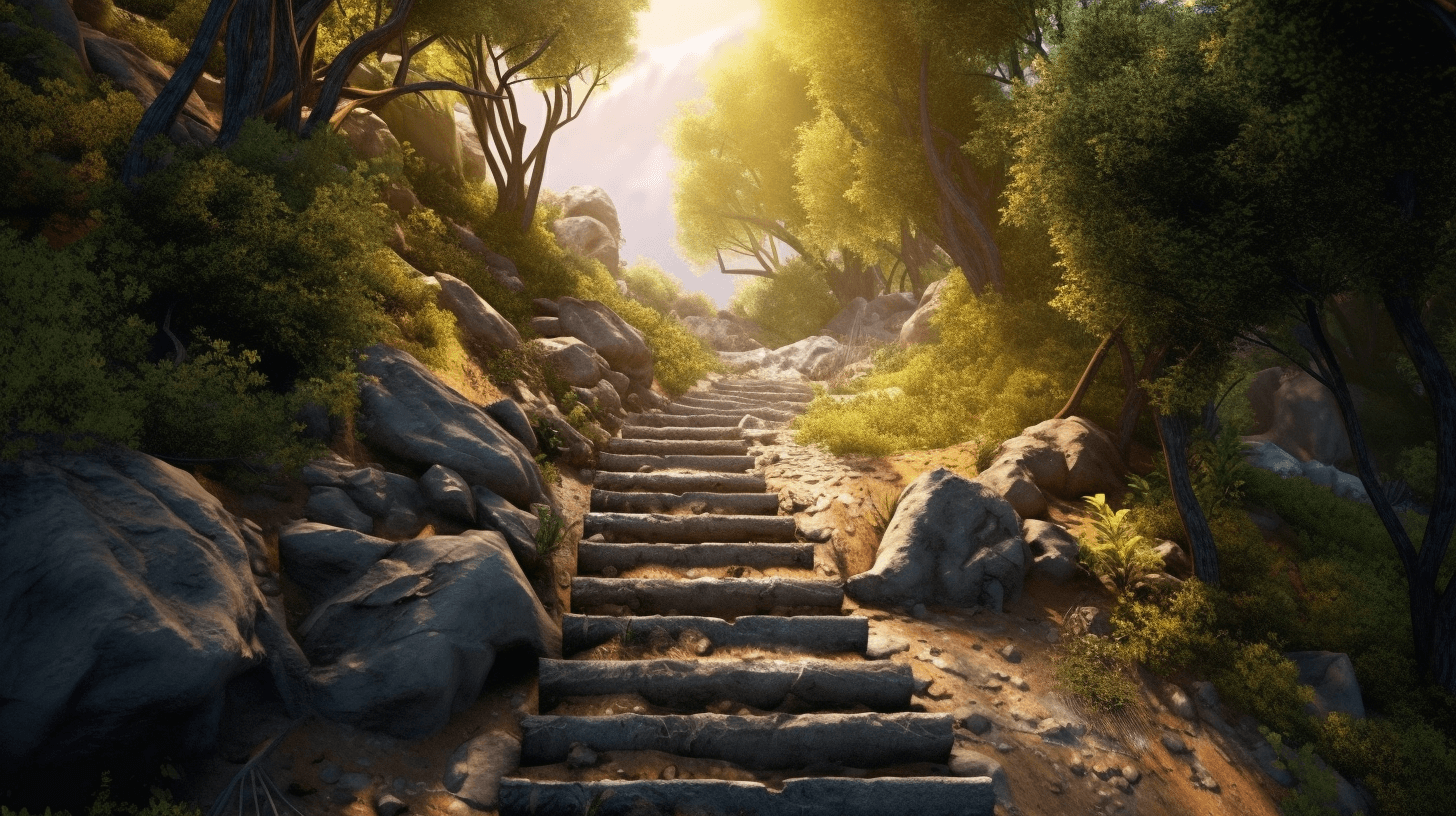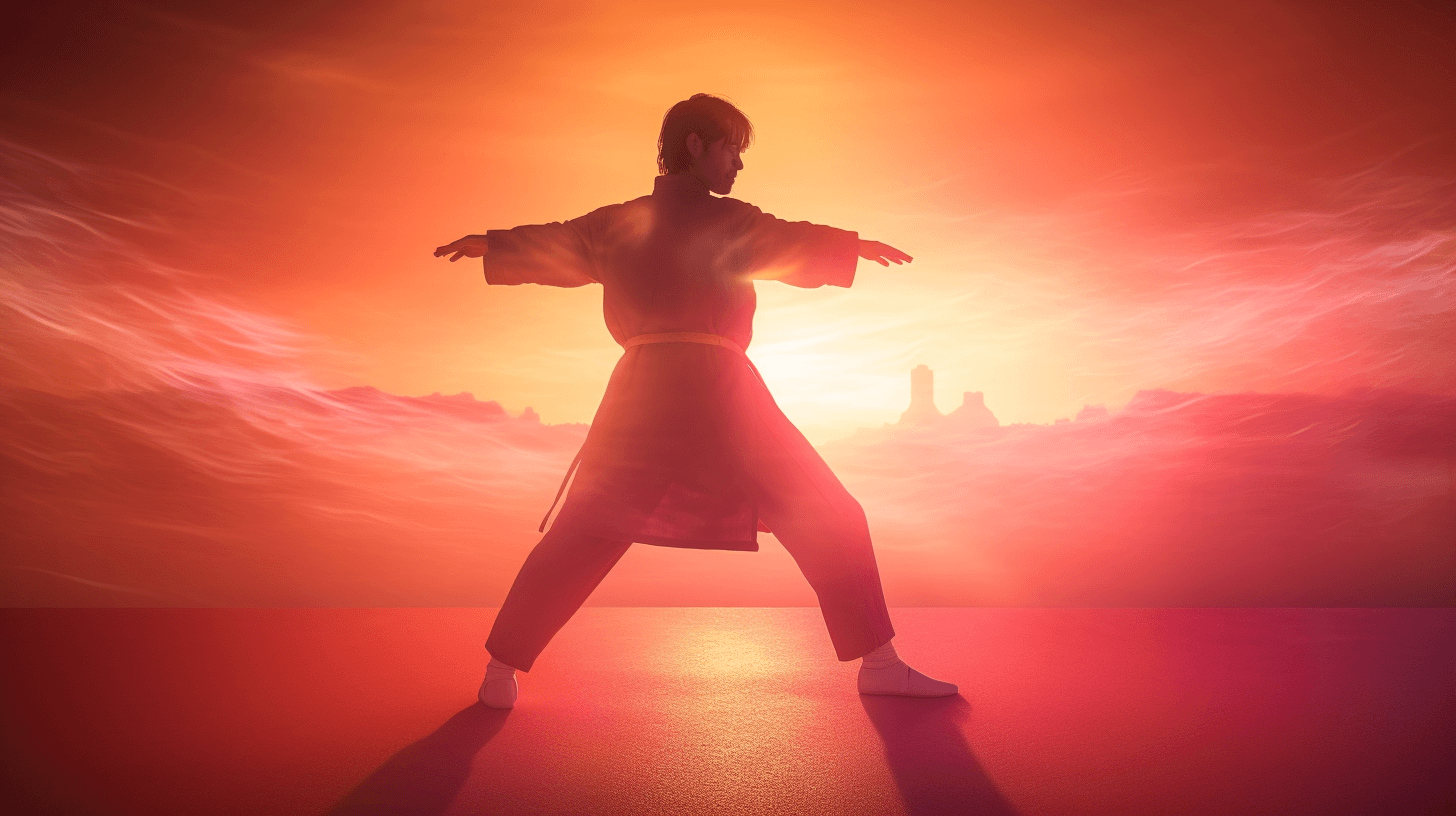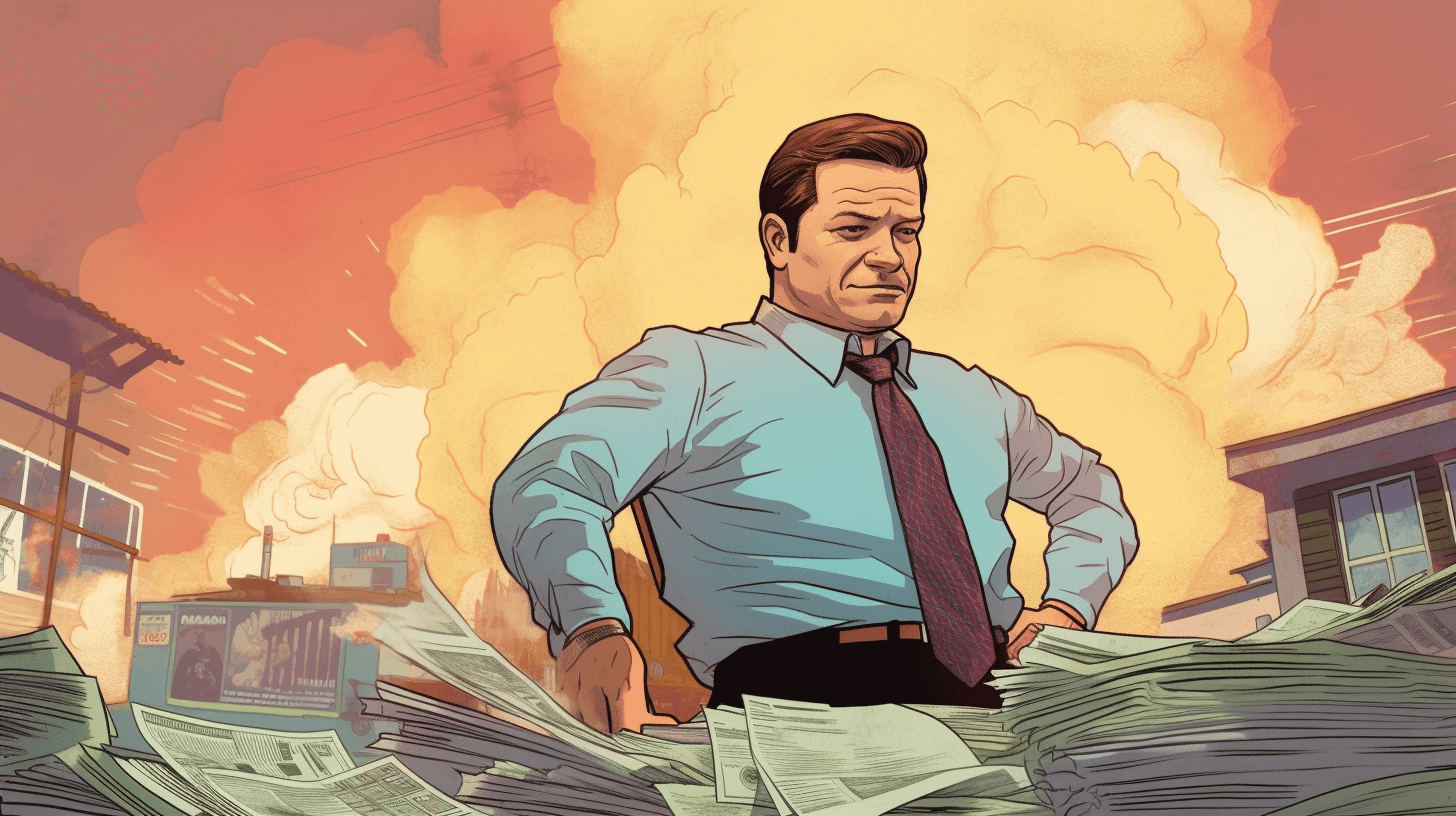🏞️🚶♂️🦽 Da Beauty of Nature: Da Ultimate Guide fo’ Disabled Hikers
Eh, we givin’ a big shoutout to all da outdoor enthusiasts wit’ disabilities dis summer! If you stay tinkin’ dat hiking only fo’ da able-bodied, den we got somet’ing fo’ you. We like share some gems – paths, overlooks, and oddah sites – in da U.S. parks where you can enjoy da great outdoors even if you get disabilities. No mattah what kinda disability you get, no worry, we got you covered. We going highlight some accessible adventures dat goin’ blow your mind! 🌳💪🌞
When I was young, I nevah even tink about hiking. I get multiple disabilities and chronic illnesses, so I nevah feel like I could be “outdoorsy” like da oddah folks. Was hard fo’ me find info about hiking as a disabled person, so I had to spend plenty time trying fo’ figure out how fo’ make ’em work fo’ myself. But, eh, now we stay in da 21st century, and accessibility stay improving! No get one solution dat fits everyone, but we can find ways fo’ make da outdoors more accessible fo’ each person’s unique needs. 🧗♀️🏕️💡
Accessibility stay key, but everybody get different needs. Fo’ example, I look fo’ trails dat no get long slopes, no get big rocks or steep stairs blocking da way, and get shade. I need da trails fo’ be wide enough so I can use my cane or trekking poles. Plus, benches and resting areas along da way help plenny ’cause I like bring my collapsible chair. 🌳🛠️🌤️🌿
Now, when we talk ’bout wheelchair accessibility, dat stay whole different story. One trail gotta be flat, wide, and have one firm surface wit’ no obstacles fo’ be truly wheelchair-accessible. But some trails get steeper, more rugged sections, so they can work fo’ people using all-terrain chairs or experienced outdoor-wheelchair users. We call ’em wheelchair hikeable trails. Da important ting is fo’ find what work fo’ you and yo’ capabilities. 🦽🚵♀️🏔️
Plenny times, da grade or slope of da trail make all da difference fo’ people wit’ disabilities. You can usually find dis information, da percentage of da slope, on da park websites or trail apps. If da slope stay more than 12 percent, can be tough fo’ people wit’ mobility or cardiopulmonary concerns. And fo’ most wheelchair users, da trail stay completely inaccessible. We also gotta tink ’bout tactile signage and maps dat get raised elements fo’ people to explore wit’ touch. Plus, accessible parking, and no get too much noise or unexpected noises ’cause dat can lead to sensory overload fo’ people wit’ sensory-processing disorders. 📈🚧🔤🚙🎧
Nature stay important fo’ our well-being, no matter what kind of disabilities we get. Everybody should get da chance fo’ experience it, and now we goin’ show you da accessible summer adventures dat you no can resist! 🌳🌞🏞️
One place dat stay near and dear to my heart stay da redwood country in Northern California. Da coast redwoods stay da tallest trees in da world, and wen you stand among ’em, you going feel small and humble. Dis area, Redwood National and State Parks, stay in da ancestral territory of da Yurok and Tolowa peoples, and guess wat? Plenny of da place stay accessible fo’ all. 🌲🌿🍃
Dey get trails designed specifically fo’ people who use wheelchairs and oddah mobility aids, and even fo’ people who are blind or have low vision. Dese trails combine fo’ create one three-quarter-mile loop dat start at da Prairie Creek Visitors Center in Prairie Creek Redwoods State Park, part of da Redwood National and State Parks system. Da Access trail take you beneath da redwoods along Prairie Creek, and den you can see one overlook wit’ signs dat tell you all ’bout fish spawning. Aftah quarter mile, you can connect wit’ da Revelation Trail or keep going anoddah quarter mile to da Elk Prairie Campground. 🌳🚶♀️🦯🌲
Da Revelation Trail get guide ropes, and da platform around one old-growth redwood let people who are blind or have low vision engage all their senses. Da signs, no get Braille, but da park provide brochures dat ready fo’ Braille and audio descriptions. Plenny things fo’ you enjoy and learn from! 🌲📜🔍
And den, we get dis 10-mile-long scenic parkway, wit’ redwood groves towering on da sides. Dis road go right through Prairie Creek Redwoods State Park. On da first Saturday of each month from October to May, dey close da parkway to vehicles, so you can experience it on foot or roll on your wheels. If you like travel da whole length of da road, can use one power wheelchair. Da road stay paved and gently rolling. 🌳🛣️🌲
Dis one awesome spot fo’ spend one day or have one picnic. Da day-use area, at da end of Enderts Road near Crescent City, get paved parking and toilets dat accessible. One sidewalk wit’ edge guards take you to two picnic tables on da beach, and dey even get one grill and fire rings fo’ cook up your food. You can easily access da beach from da picnic area ’cause it stay pretty level and da sand stay usually well-packed. And if you like learn ’bout da Tolowa villages, dey get some signs fo’ you, but, eh, dey no get Braille. And if you like go on da beach wit’ your wheelchair, dey get beach push wheelchairs wit’ balloon wheels dat make it easy fo’ roll on da sand. You can borrow ’em, but make sure fo’ reserve one at da Crescent City Information Center. 🏖️🏞️🚗🪑🎣
Another spot I like talk ’bout stay da North Cascades. I went deah few years ago, and I fall in love wit’ da jagged peaks, alpine lakes, and waterfalls. Dis national park stay one secret gem, not too many people go deah, so you no go get one crowded experience. Dey get plenny accessible and low-effort trails, plus opportunities fo’ learn ’bout da Sauk-Suiattle and Upper Skagit tribes, who still practice their traditions and rights on dis land. 🏔️💦🌲
We get dis 0.6-mile loop dat perfect fo’ people using all-terrain wheelchairs, canes, or hiking poles. Dis trail start at da Newhalem Powerhouse, near da visitor center. It one delightful trail along da Skagit River, go through one mossy forest wit’ tall Western red cedars. Da signs along da way give you all da historical and botanical info you need. Da trail itself stay compact wit’ dirt and gravel, so you can hike wit’ your wheelchair. Only ting fo’ watch out fo’ stay da 12 to 15 percent incline at da end. But, no worry, if you like avoid da incline, you can just go back da way you came. Sometimes da trail might get mud or be a li’l narrower if plants grow along da edge. Da parking area, no got designated accessible parking, but you can parallel park near one circular area and set up your ramp. 🚧🚗🚶♀️🛹
And den, not far from Highway 20, we get one 0.3-mile boardwalk dat wheelchair-accessible. Dis boardwalk and compact gravel trail take you through one ancient forest and along Happy Creek. And let me tell you, da creek stay true to its name – every time I hear its gentle babbling, I feel pure joy. Along da way, dey get plenny spots wit’ benches fo’ you relax and take in da view. Da parking area stay paved and got two accessible spots. If you need van access, you can park next to da toilet or use da parallel parking area. 🏞️🌲🌉
Oh, and we no can forget ’bout Rainy Lake, just outside North Cascades in Okanogan-Wenatchee National Forest. Dis one-mile paved trail take you through bogs, meadows, and waterfalls, all da way to one stunning lake dat sit in one cirque surrounded by mountains. Da trail stay shaded and get plenny benches along da way. Fo’ dis one, da power-wheelchair users goin’ have da best time. Da incline, no too steep, but it stay long, and dey get few sections dat 8 to 10 percent incline. 🌄🌊🛣️
You can start da trail near da Rainy Pass Trailhead, and dey get plenny accessible parking spots, vault toilets, and water in da summer. So, no worry, you covered! 🚙🚽💧
My first trip to dis next place I goin’ talk ’bout was on one cross-country road trip. Aftah days of bland interstates, da vibrant rock formations and prairies felt like one dream come true. Dis land stay so fascinating ’cause thousands of years of geological action create and erode da rocks. And da prairies, dey home to bison, prairie dogs, and oddah wildlife. Plus, dis land get deep cultural and spiritual significance fo’ many Indigenous groups, like da Oglala Lakota Nation. Dis dey Tribal Trust land, and dey get da South Unit of dis park. 🌾🏞️🌅
Now, outta da 17 trails in dis park, three fully or partially wheelchair-accessible. And da best part, dey get plenny overlooks dat accessible too. Da back roads, usually gravel, can also be hikeable fo’ people using wheelchairs. Yeah, it can get hot in da summer, so bring water and protect yourself from da sun. ☀️💧🌾
One of da accessible trails lead to one boardwalk where you can check out tactile exhibits and fossil replicas of ancient animals dat used fo’ live deah. Da interpretive signage, dey even got Braille fo’ da visually impaired. Da trail itself, quarter-mile round-trip, start at one parking area on da Badlands Loop Road, east of da White River Valley Overlook. No worry, dey got designated accessible parking spots. 🦴🚶♀️🚗🔤
Aftah da trail, you can continue driving on da Badlands Loop Road, and if you get high clearance or an all-terrain wheelchair, you can take da dirt roads dat lead to oddah overlooks. And don’t forget your camera ’cause da views goin’ blow you away! 📸🏜️🚗
Dis just da start of da accessible adventures you can have dis summer. Dey plenny more national parks and outdoor spaces dat work hard fo’ provide access to all. And remember, you no need be “outdoorsy” in da traditional sense to enjoy da beauty of nature. Da outdoors belong to everyone, no mattah what kind of disabilities we got. So get out deah, explore, and make some amazing memories! 🌳🌈🏕️💚
NOW IN ENGLISH
The Beauty of Nature: The Ultimate Guide for Disabled Hikers 🏞️🚶♂️🦽
Hey, we’re giving a big shoutout to all the outdoor enthusiasts with disabilities this summer! If you think that hiking is only for the able-bodied, then we have something for you. We’d like to share some gems – paths, overlooks, and other sites – in the U.S. parks where you can enjoy the great outdoors even if you have disabilities. No matter what kind of disability you have, don’t worry, we’ve got you covered. We’re going to highlight some accessible adventures that will blow your mind! 🌳💪🌞
When I was young, I never even thought about hiking. I have multiple disabilities and chronic illnesses, so I never felt like I could be “outdoorsy” like the other folks. It was hard for me to find information about hiking as a disabled person, so I had to spend plenty of time trying to figure out how to make it work for myself. But now we’re in the 21st century, and accessibility is improving! There’s no one solution that fits everyone, but we can find ways to make the outdoors more accessible for each person’s unique needs. 🧗♀️🏕️💡
Accessibility is key, but everybody has different needs. For example, I look for trails that don’t have long slopes, big rocks, or steep stairs blocking the way, and that have shade. I need the trails to be wide enough so I can use my cane or trekking poles. Plus, benches and resting areas along the way help a lot because I like to bring my collapsible chair. 🌳🛠️🌤️🌿
Now, when we talk about wheelchair accessibility, that’s a whole different story. A trail has to be flat, wide, and have a firm surface with no obstacles to be truly wheelchair-accessible. But some trails have steeper, more rugged sections, so they can work for people using all-terrain chairs or experienced outdoor wheelchair users. We call them wheelchair-hikeable trails. The important thing is to find what works for you and your capabilities. 🦽🚵♀️🏔️
Many times, the grade or slope of the trail makes all the difference for people with disabilities. You can usually find this information, the percentage of the slope, on the park websites or trail apps. If the slope is more than 12 percent, it can be tough for people with mobility or cardiopulmonary concerns. And for most wheelchair users, the trail is completely inaccessible. We also have to think about tactile signage and maps that have raised elements for people to explore with touch. Plus, accessible parking, and not too much noise or unexpected noises because that can lead to sensory overload for people with sensory-processing disorders. 📈🚧🔤🚙🎧
Nature is important for our well-being, no matter what kind of disabilities we have. Everybody should have the chance to experience it, and now we’re going to show you the accessible summer adventures that you can’t resist! 🌳🌞🏞️
One place that is near and dear to my heart is the redwood country in Northern California. The coast redwoods are the tallest trees in the world, and when you stand among them, you’re going to feel small and humble. This area, Redwood National and State Parks, is in the ancestral territory of the Yurok and Tolowa peoples, and guess what? Plenty of the places are accessible for all. 🌲🌿🍃
They have accessible trails like the Lady Bird Johnson Grove Trail and the Prairie Creek Trail, which provide wheelchair-friendly paths and stunning views of the majestic redwoods. These trails are paved, wide, and relatively flat, making them suitable for individuals with mobility challenges. You can immerse yourself in the tranquility of the forest and marvel at the towering trees.
Another fantastic destination is Zion National Park in Utah. They have made significant efforts to enhance accessibility throughout the park. The Zion Canyon Scenic Drive offers accessible shuttle buses that allow you to explore the breathtaking scenery and access various trailheads. The Riverside Walk is a paved trail that follows the Virgin River and leads to the awe-inspiring Narrows. It’s a great option for those with mobility limitations who still want to experience the beauty of the park.
In Acadia National Park, Maine, you can enjoy accessible trails like the Jordan Pond Path and the Ocean Path. These paths offer stunning coastal views and are designed to accommodate individuals with disabilities. The Jordan Pond Path is a flat gravel path that encircles the picturesque Jordan Pond, while the Ocean Path provides scenic views of rocky shores and crashing waves.
If you’re looking for a unique adventure, Great Smoky Mountains National Park in Tennessee and North Carolina has accessible options too. The Clingmans Dome Accessible Trail takes you to the highest point in the park and offers panoramic views of the surrounding mountains. The Gatlinburg Trail is another accessible path that allows you to explore the park’s diverse ecosystems, including forests and rivers.
These are just a few examples, and there are many more accessible trails and experiences available across national parks in the United States. Remember, it’s essential to plan ahead, check park websites or contact park authorities for the most up-to-date information on accessibility features and accommodations.
Nature is for everyone to enjoy, and with increasing efforts to improve accessibility, individuals with disabilities can embark on incredible outdoor adventures. So get ready to explore, embrace the beauty of nature, and create unforgettable memories on your next accessible hiking journey! 🏞️🚶♂️🌿🌞







